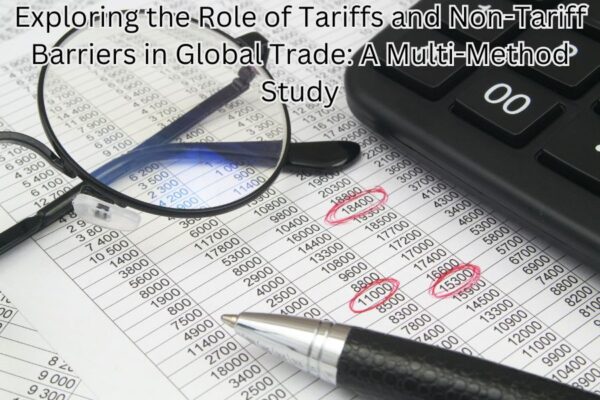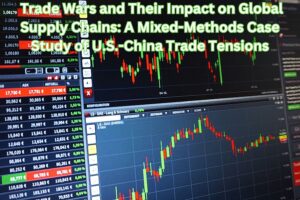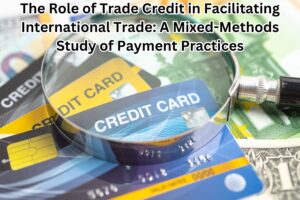Description
Exploring the Role of Tariffs and Non-Tariff Barriers in Global Trade: A Multi-Method Study
Abstract
Through facilitating cross-border digital transactions, e-commerce is significantly changing global trade. The evaluation also targets to explore the transformation. Examining how e-commerce impacts worldwide trade streams, accessibility to markets, as well as distribution networks simultaneously acknowledging the profit and obstacles it suggests firms and those making choices is the objective of this analysis. This is also critical to ponder how these tendencies have been induced through technology progresses as well as political structures. However, e-commerce remains converting a major part in the interchange of merchandise as well as services. As seen by the expanding tendency of foreign trade through online channels. As such, its consequences and implications require careful consideration.
The research investigation employs a combination of methodologies, beginning with a quantitative assessment grounded in a practical model. This stage assesses the impact of e-commerce on trading rates, costs associated with transactions, and the growth of markets leveraging data acquired on cross-border transactions through the internet. Examining elements like browsing habits, electronic means of payment, and online trading laws offers a statistical perspective on how e-commerce contributes to trade globalization. Incorporating infrastructures the model additionally accounts for geographical variations in consumer habits. The study also compares data from developed and developing countries to find trends and distinctions in the adoption and growth of computational trade.
The qualitative phase supplements the quantitative findings with viewpoints from interviews with lawmakers, business leaders, and entrepreneurs involved in internet commerce. These interviews provide context and a deeper understanding of the elements affecting digital commerce. It also highlighting real-world and legal issues that affect global digital transactions. Additionally, the information obtained from these interviews helps identify new trends and potential challenges in the online market. In addition to that, combining both qualitative and quantitative techniques to investigate topics like data privacy, administrative duties, and payment limitations offers a comprehensive knowledge of e-commerce’s transformative role in international trade.
Read more about the topic
The importance of Non – Tariff Barriers in Regulating International Trade Relations
View Other Projects on Global Trade
The Role of Digital Trade Platforms in Expanding Global Trade: A Mixed-Methods Study
The Future of Global Trade in the Context of Digital Transformation: A Mixed-Methods Study








Reviews
There are no reviews yet.